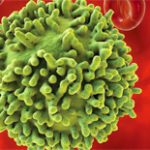The serine-threonine protein phosphatase 2A (PP2A) enzyme is critical for regulatory T cells to function—without it, they don’t have the ability to suppress effector T cells and can’t protect against autoimmunity, according to new research published in Nature Immunology. Researchers found that conditional knockout mice—in which PP2A expression is knocked out only in regulatory T cells—developed…






